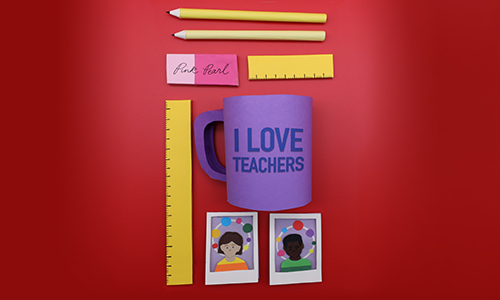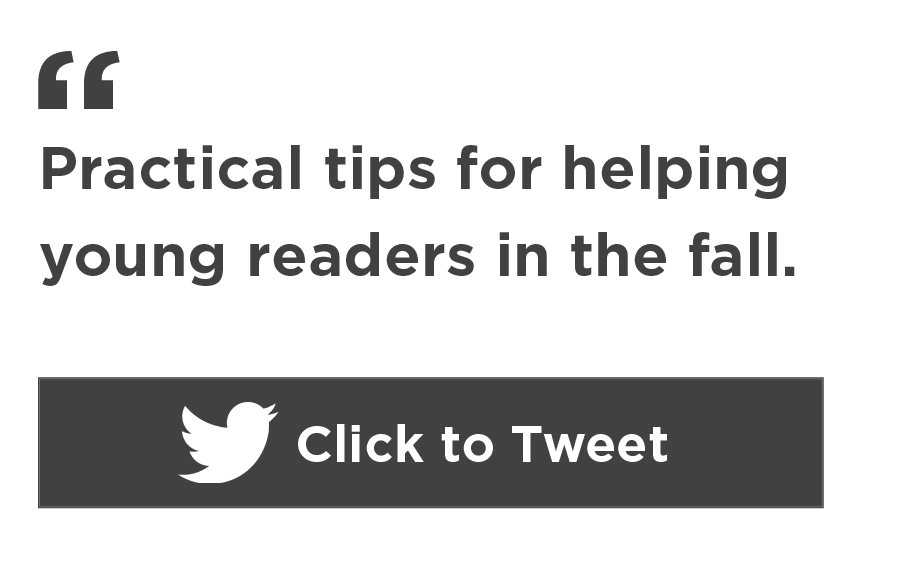I’m a former elementary teacher and parent of three children. My youngest son will be a senior in high school this fall. While working from home during the COVID-19 pandemic, I felt fortunate he was old enough to manage his online learning without any intervention from my husband and me. We were out of the woods—at least in that regard!
Throughout the spring, I kept wondering how families with little ones learning to read were navigating phonological awareness and phonics instruction from home. And I worried about how remote instruction (or lack thereof) will impact those kids this fall.
Early readers transform just like that hungry caterpillar
Educators understand pre-K–3 is a critical learning time that directly correlates with academic success and impacts graduation rates. A solid, early reading foundation helps ensure every child a successful path forward for years to come.
While we’re inclined to bundle these grades together, reading instruction actually looks and feels much different for each grade. A sort of metamorphosis takes place as students begin playing with phonemes in pre-K, manipulating graphemes in kindergarten, and decoding sentences in first grade. In some states, students earn their wings with a reading proficiency score at the end of third grade. But in order for that proficiency to be reached, we must be willing—and able—to revisit skills that haven’t been perfected yet.
The five skills of a proficient reader
Early childhood educators are well versed in the Big Five reading constructs identified by the National Reading Panel in 2000: phonological awareness, phonics, vocabulary, fluency, and comprehension. The systematic development and application of these constructs are vital and must be part of every solid core reading program.
[I]n order for [reading] proficiency to be reached, we must be willing—and able—to revisit skills that haven’t been perfected yet.
Phonological awareness is the precursor skill. Students can begin playing with sounds before they need to differentiate between the letter B and the letter D, for example. Phonological awareness and phonics instruction can occur in tandem, but pre-K students who are able to rhyme and play with sounds are better prepared to tackle phonics, or sound/symbol correspondence. For this reason, educators encourage families to play rhyming games and spend time reading and talking with their young children to develop background knowledge, vocabulary, and a literate lifestyle.
Regardless of your state, you’ll be hard pressed to find a second-grade classroom teacher teaching and assessing phonological awareness, however. Why? Well, the assumption is that phonological awareness has been secured by then, so it is no longer included in state standards beyond first grade. The chart below shows the Big Five reading ideas and the focus of instruction for grades K–3.
Let’s not assume, especially following COVID school closures
The assumption that students will not need instruction centered on phonological awareness after first grade does not match reality. Each fall, second-grade classrooms are filled with young children reading below grade level, and while teachers may initially assume fluency and comprehension are the reason, foundational skills like phonological awareness are often what’s causing the trouble. Many of these children reading below grade level still have gaps in phonological awareness and rudimentary phonics that, left unchecked, will likely cause them to struggle along the road to reading proficiency.
Megan Kuhfeld’s research on summer slide for early learners suggests notable reading loss for students during the summer. Forecasts are pointing to a summer slide like no other following COVID-19 school closures. So what’s your plan for young children entering second grade this fall and lacking phonological awareness skills?
Practical tips for helping second-graders read
This fall, despite state reading standards, second-grade teachers will likely need to assess phonological awareness skills and close those gaps to help accelerate learning. Here are some things to try.
- Screen early to identify skills levels. Administer a foundational skills screener like MAP® Reading Fluency™ to identify students with skills gaps in phonological awareness.
- Create learning groups based on skill level. Once students have been screened, analyze the data to devise instructional groups based on kids with similar gaps. Reference the phonological awareness development continuum highlighting the progression of skills from easy to difficult. Some students will need work on rhyming, for example, while others will be ready to manipulate phonemes.
- Enable first-grade teachers to become coaches. Not all second-grade educators are well versed in phonological awareness instruction, but their first-grade colleagues can provide support. Recruit them as coaches. Rethink professional learning to address any instructional gaps, too.
- Consider multi-age learning groups. Instructional resources for phonological awareness skills may need to be shared or reallocated. Multi-age learning groups can help you get the most from the resources you have.
If you’re a second-grade teacher, we get it. You didn’t sign up to teach phonological awareness skills! But since doing so may be part of your new normal, there are things you can do to ease the burden and keep your students front and center. Look to your principal and first-grade colleagues for support.









